I haven’t been actively blogging lately, and that’s not because nothing is happening. Quite the opposite, I can barely find time these days, so let me share the most important stuff with you.
Inevitable happened: my journey into an alternative reality I’ve embarked on exactly six years ago is now complete. A few days ago I’ve oficially become Dutch, a citizen of the Kingdom of the Netherlands.
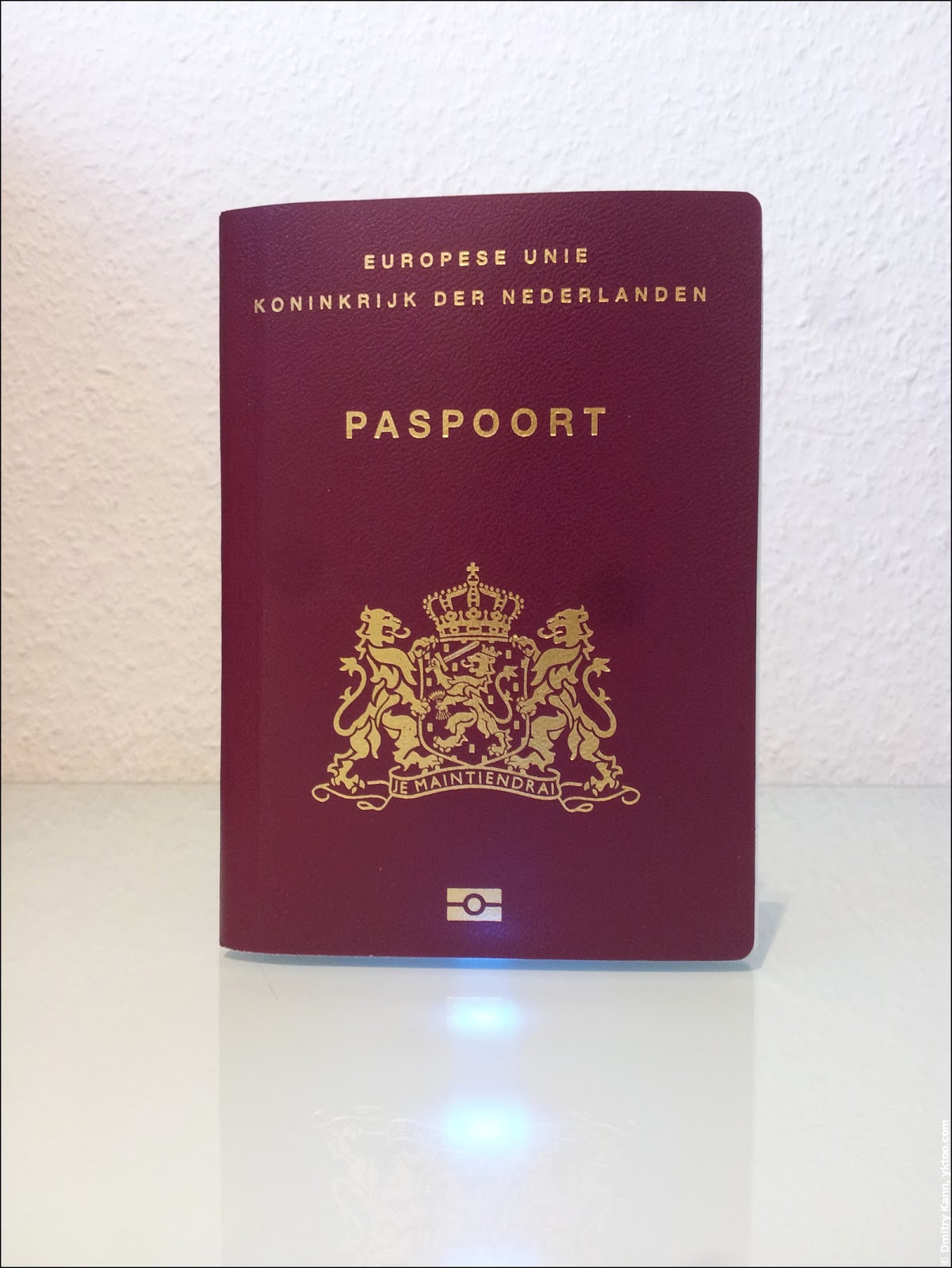
I must say I have nowadays a much stronger conviction that the choice once made was right. Over the past few years the two worlds have moved even further away from each other. Back in 2008 one could argue Russia could still get on track, it’s now evident the developments of last years, months, days have effectively ruined all hope, especially considering the popular support behind it.
Good thing is—this time the grass is greener on our side.
The prehistory of my dutchness is pretty straightforward. In order to be eligible for Dutch nationality you need to:
- Have lived 5 years in the country. (The government has recently proposed increasing the term to 7 years, but the amendment has not yet passed through the Parliament.)
- Pass a language exam.
- Have no criminal record or big fines in the past four years (more than € 453 one-off or € 680 in total).
- Pay a sizeable amount at the town-hall (currently € 821).
- Participate in a “naturalisation ceremony”.
I’ve scored all these points: I’ve lived five years here, passed the exam back in 2012, respected the law and even forked out the extortionate fee.
Once the application is submitted, all you can do is wait. The official term for taking a decision is one year, and it was almost up—I’ve waited for eleven months.
First I got a notification somewhere in January that my case was presented to His Majesty the King (yes, we’ve got a king now). The king has handled my case quite fast and in a few weeks I was notified by the immigration service that the last formality has to be fulfilled.
Naturalisation Ceremony
The naturalisation ceremony (naturalisatieceremonie ) is strictly mandatory, failure to attend which results in the decision of awarding Dutch nationality being withdrawn. From the procedure point of view, its most important part is a declaration of allegiance (verklaring van verbondenheid).
Such ceremonies are regularly held by every municipality (gemeente ), so for example in Amersfoort it happens once a month in the town-hall, stadhuis .
As a side note, I’m noticing that I’ve considerably “turned Dutch” (ingeburgerd ) over the last few years, and I like it. I’ve grown so used to having a vast international network of friends, to the relaxed way of everyday life, to well-managed aspects of it, to friendly people and tidy streets, even to occasional minor downsides of it—that I can hardly imagine how it could be possible otherwise. The alternative reality is hard to settle in, but it’s even harder to leave.
So here you land in a calm and affable Dutch atmosphere, and you’re offered a cake with a smile:

The Dutch are coffee-driven, so the town-hall has even arranged special mugs:

At a certain moment the Dutchies-to-be are lead into the council chamber. The desks there are marked with their names in the alphabetical order. A town-hall official explains the procedure to the audience, the latter pretends to be listening.

There are 31 people on the list, most of them are of Turkish, Arabic or African origin. I’m the only one from the ex-USSR.
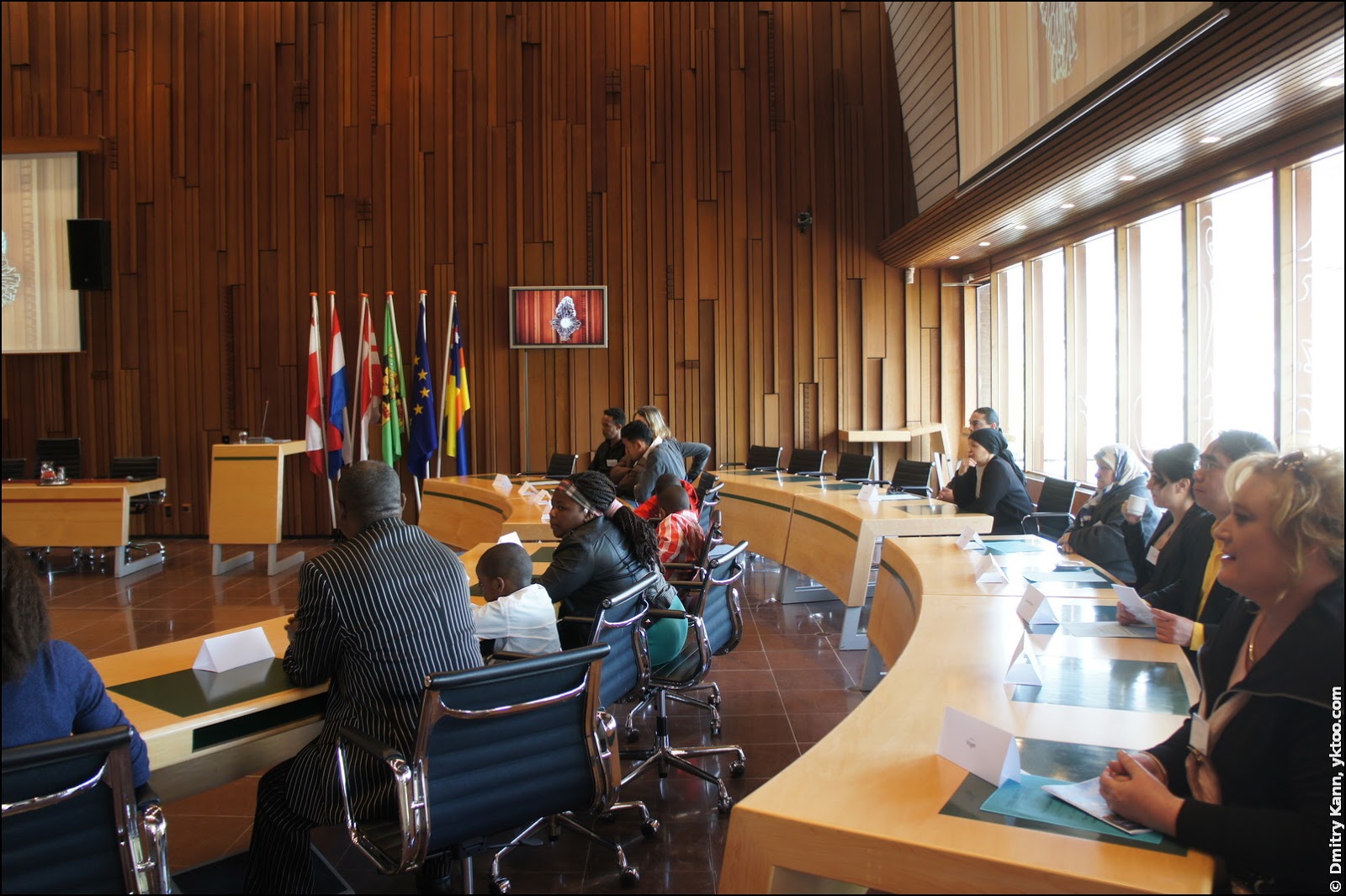
The official part begins. The mayor, Lucas Bolsius, who once introduced us to Amersfoort, steps up and gives a long speech about the importance of the event, the Dutch culture, its key values and so forth.
Finally he reads out the Declaration of Allegiance and starts the confirmation round. He approaches the candidates one-by-one, who would stand up and say either (“That I affirm and promise”, the secular version) or (“So help me God Almighty”, the religious version). At exactly that moment you’ve formally become Dutch.

Then you shake hands with the mayor and are handed over a Certificate of the Dutch Nationality. Next to that you also get a medal with the inscription Landgenoot. Stadsgenoot (“fellow countryman, fellow cityman”) and an outline of the Netherlands depicting the location of Amersfoort:

Both versions of the oath are printed on sheets of paper lying on everyone’s desks. They are also shown on big wall screens. But some people either didn’t listen or couldn’t understand the explanations. Somebody would start reading from the title part of the sheet, for instance. But nevermind, the officials must be well used to all kinds of situations.
Most people chose the secular version, apparently because it’s simpler. Only one man from Indonesia was brave enough to say the long one:
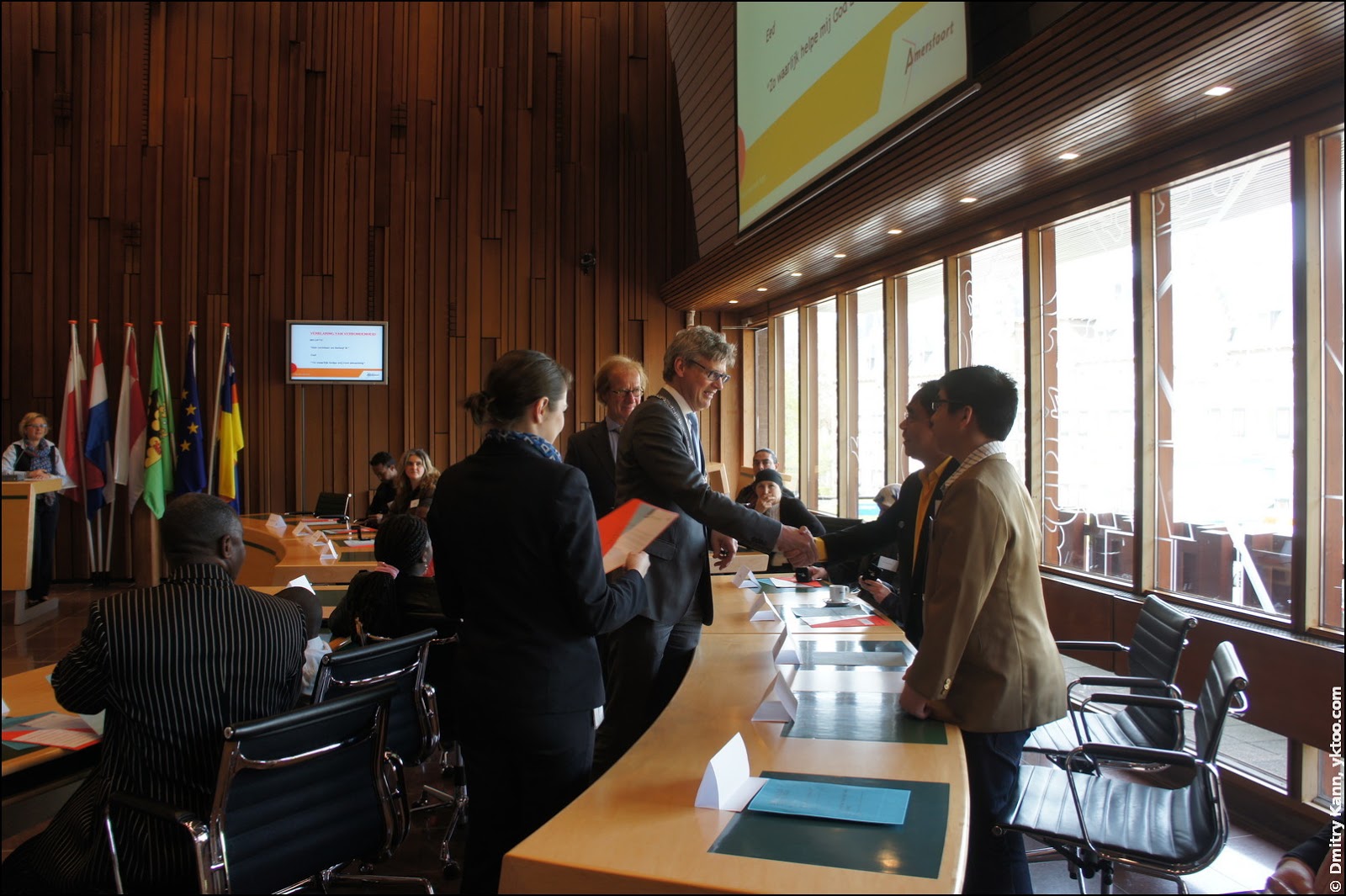
Once the round was over everybody sang the first verse of Dutch National Anthem (Wilhelmus ). The text of the anthem was shown on wall screens like in karaoke.
And at last, everybody gets together for a group photo with the mayor:
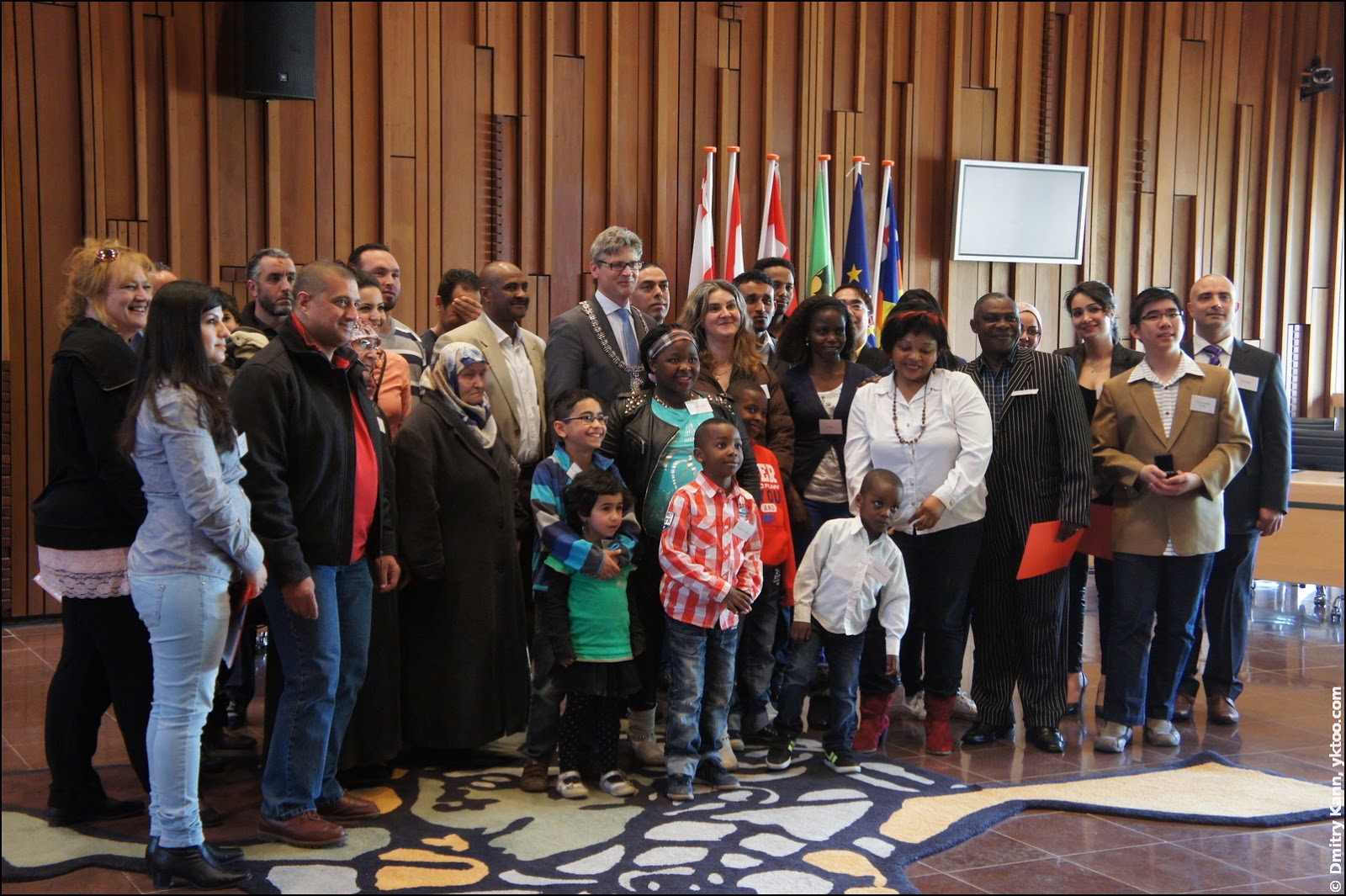
Everybody’s happy. The mayor poses for a photo.
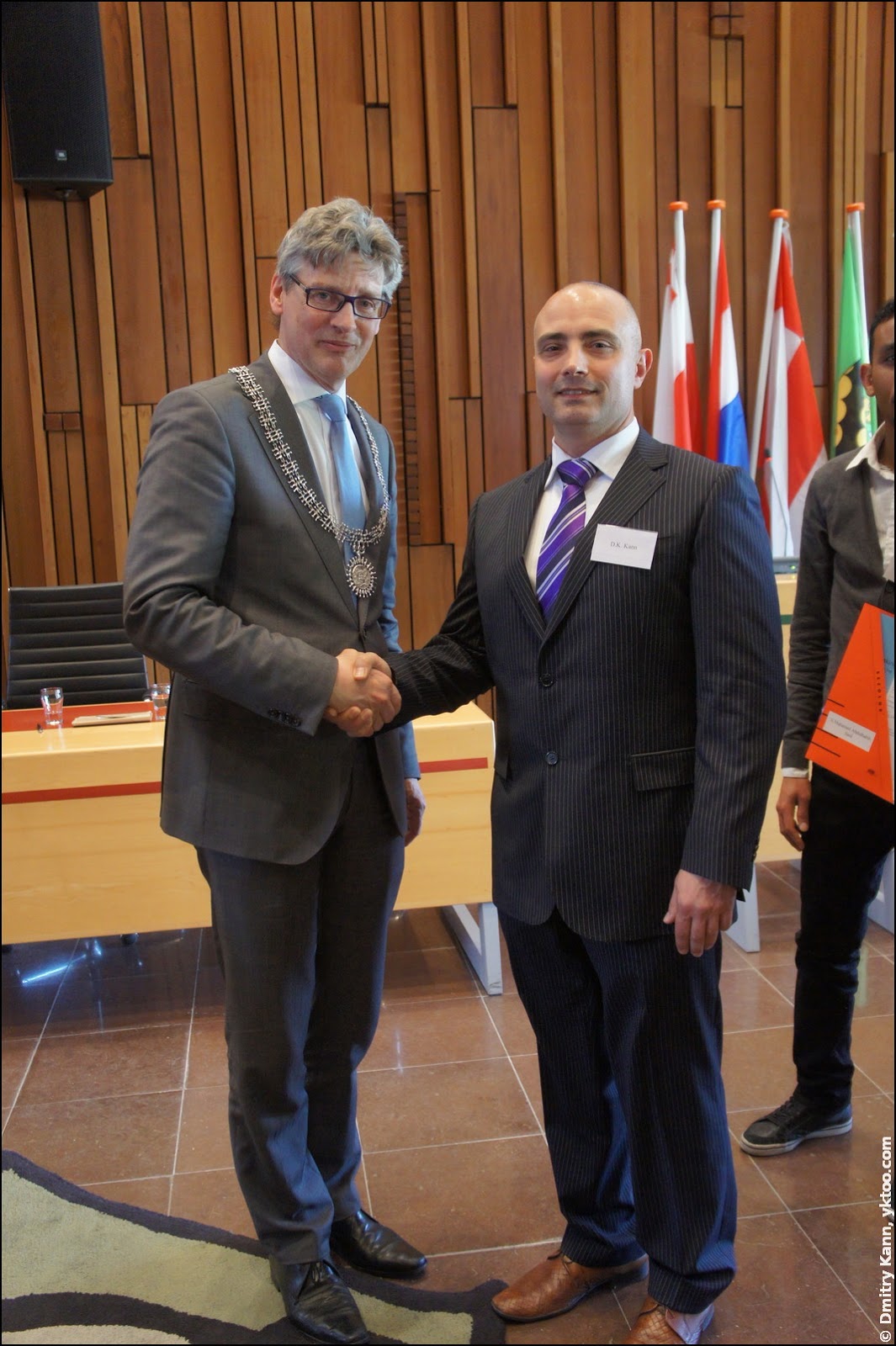
That’s all. About a week later you collect your new passport here. You get your fingerprints scanned for it, and also your height is registered. ■
 — world’s fastest URL shortener
— world’s fastest URL shortener
Comments